| Botanical Name |
|
| Family |
Proteaceae - The Protea family
|
| Pronunciation |
par-AH-noh-mus ree-FLEK-sis |
| Common Name(s) |
English: Van Staden's Sceptre; Yellow Paranomus
Afrikaans: Geel Paranomus; Van Stadensepterboom
|
| Plant Group |
- Fynbos Certain plants endemic to the areas of the Western Cape of South Africa that have a Mediterranean climate of cold, wet winters and hot, dry summers.
- Shrub A woody plant of relatively low height, having several stems arising from the base and lacking a single trunk; a bush.
|
| Plant Size |
- Medium
| Tree | 10m to 16m |
| Shrub | 1m to 2m |
| Perennial/ground cover | 40cm to 60cm |
| Bulb | 40cm to 60cm |
| Succulent | 40cm to 60cm |
|
| Position |
- Sun The area is in full sun for all or most of the day, all year round.
|
| General Information |
- Drought Tolerance: Moderate The plant is moderately adapted to arid conditions and can survive short periods of drought and high temperatures without extra water.
- Evergreen Plants that have leaves all year round.
- Frost: Tender A plant that will not survive any frost or low winter temperatures.
- Roots Non-invasive Safe to plant near pools, paving, walls or buildings.
- Sand tolerant Plants adapted to survive in nutrient poor, very sandy soils.
- Water Moderate These plants will need some extra watering compared to water-wise plants. Plant them together, in at least some shade and in a convenient proximity to the house so that grey water can be utilised during times of drought.
- Wind Tolerant Plants able to withstand the effect of strong winds.
|
| Specific Information |
Paranomus reflexus is an unusual fynbos shrub not often seen in gardens. It has an unusual leaf structure, the lower leaves being finely divided, while the upper leaves are entire. The flowerheads resemble those of the bottlebrush
This is an endangered species and is facing a very high risk of extinction in the wild because its habitat is being destroyed by timber plantations and invasion by alien plants.
|
| Ad Break |
|
| Flowers |
| Description |
bottlebrush shaped flowerhead from 8 to 14 cm long made up of slender individual flowers
|
| Season |
- Winter Plants will seldom bloom for the entire season as given in the list, but should flower during a period within these parameters.
|
| Colour |
|
| Growth Rate |
- Fast Specifying growth rate can be very misleading as there is considerable variation of growth rate depending on type and species of plant, available water, supplementary feeding, mulching and general care, as well as the plants suitability and adaptability to the garden environment.
|
| Plant Uses |
- Accent or Focal Point A plant used to attract the attention because of its colour or form.
- Attracts bees, butterflies or other insects This plant attracts insects which can be food for birds or other creatures in your garden.
- Attracts Birds This plant will attract birds.
- Border A strip of ground, at the edge of a driveway or path in which ornamental plants or shrubs are planted.
- Cut Flowers Plants that provide flowers suitable for ornamental uses.
- Filler Either a fast growing tree or shrub used temporarily to fill in an area while the permanent plants grow to a desired size, or a plant used to fill gaps in borders or beds.
- Rock Garden An area constructed of larger rocks, arranged naturally, to emphasise the use of stones as a main element. Generally plants used do not need a lot of care.
- Suitable for coastal gardens Plants adapted to dry, sandy soil, forceful wind, limited rainfall and intense sunlight.
- Wild Garden An indigenous garden planted for the benefit of wildlife and birds. Provides food, water, a variety of mini-biomes and no poisonous chemicals are used.
|
| Distribution and Habitat |
near Port Elizabeth in the Eastern Cape, in the Van Stadens Mountains and the Elandsberg, confined to Kouga Sandstone Fynbos, in a few fragmented groups of up to 12 plants
|
| Planting Suggestions |
Paranomus reflexus is fast growing but relatively short-lived, needing replacement after 8–15 years. It requires well-drained, acid sandy soils, and a sunny position. The shrub is adapted to very nutrient-poor soils but has an extremely sensitive root system. When planting, do not disturb the root ball at all. Cut the bag away gently from the plant in the hole. Feed only with well-rotted compost and do not dig around the base inside the drip-line at any time - rather put down a thick layer of mulch once or twice a year and leave it undisturbed. It needs a warm climate with moderate rainfall throughout the year.
Note: Although my soil is on the alkaline side, this plant has grown and seeded itself most successfully on a south facing slope in Bathurst. Paranomus reflexus has proved to be water wise, needs no special care and has survived the frequent periods of drought so common in the Eastern Cape.
|
| Medicinal Uses |
|
| Ad Break |
|


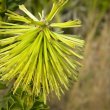
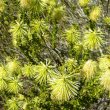
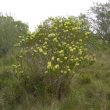
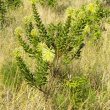

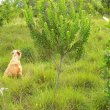
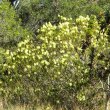
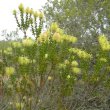
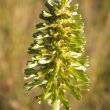


Comments
Paranomus reflexus.
Please advise if it has any medical properties. Is it also known as "perdepisbos" in Afrikaans. Many thanks.
Paranomus reflexus
Hi John
For the answer to your question, please look just above your query at the heading 'Medicinal Uses'.
I re-read all my sources of information and was not able to find any reference to the common name you have included. The only two plants with this common name are Clausina anistata, common name Perdepis, and Hippobromus pauciflorus, common name Baster perdepis. The leaves of both of these trees are known to smell of horse urine. However, Paranomus reflexus has no such odour. It would be interesting to know how or why this common name has been given to this plant. Can you perhaps give me more information?
Kind regards
Lorraine
Discuss this plant
Share knowledge, ask a question or give an experience.